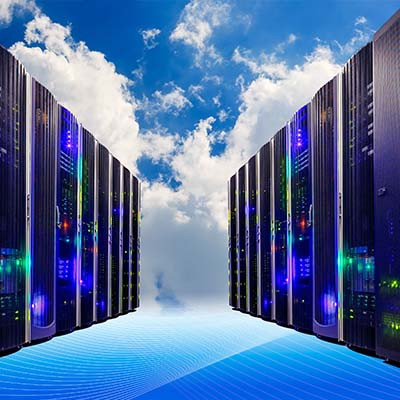Technology can have a very real impact on your company’s ability to churn out a quality product, but it can also get in the way of doing so. The difference between the two is understanding what technology you need to ensure that your business is churning out quality goods and services. This month, we thought we would take a look at quality control automation strategies for three separate parts of a business
Argentum IT LLC Blog
Cloud computing has been a hot topic in IT circles for a few years. First because of the skepticism that many IT professionals had for the practice, and now that it is a mainstream business technology, ways to boost security to protect the organization who has embraced this computing strategy. We’re here to tell you that while cloud computing is convenient, flexible, and seemingly affordable, there are instances where having physical machines makes more sense for a business.
There are times when you experience computer problems and you might hesitate to call in the big guns to resolve the issue. Unfortunately, the reality is that many businesses are under the impression that calling experts to handle their computer problems will leave them in a difficult position financially. We’re here to make sure that doesn’t happen! Here are three common computer repair problems that you might—just might—be able to solve in a simple and easy way.
The new year is underway, and many of us have undertaken the traditional resolutions as an effort to improve ourselves by kicking bad habits and adopting good ones. Why shouldn’t your business join in the fun? We’ve put together a few resolutions that could benefit your organization if your team were to adopt them.
When it comes to your business’ IT resources, who’s in charge? Do you have a CIO, or chief information officer, managing your IT decision-making, and do you have someone responsible for managing and maintaining your systems? If you don’t know the answer to either of these questions, then we need to have a conversation about your relationship with technology management.
If there is one shared priority most businesses and other organizations need to have it’s a strategy on how they are going to go about securing their network, infrastructure, and data from the numerous threats they face. Let’s take a look at three of the most crucial issues surrounding organizational cybersecurity as we head into the new year.
There will come a time when your business will need to acquire hardware like monitors, server units, workstations, networking components, and other technology. It is your responsibility as a business owner to make educated decisions about how you go about upgrading your gear, but it’s not always immediately obvious what the correct path forward is.
Communications are an integral part of your business’ operations, but they can often fall to the wayside due to other, more pressing matters. This is especially concerning, considering the remote nature of much work these days. Let’s examine some of the most important parts of a comprehensive communications infrastructure for your business.
How often do you find yourself in this situation? You are typing away on your computer pushing through your day-to-day tasks, scratching items off your to-do list, and communicating with your employees when suddenly, your computer freezes up. You’re then forced to perform a hard reset just to get your computer responsive again.
Google’s latest update for their popular Chrome browser has a little bit of a surprise. Chrome can now change many menus to Microsoft’s Windows 11 style menus. While this may be a surprise to some, Google and Microsoft have started to work together in places. Microsoft’s Surface Duo smartphone runs Android technology, and now Google’s Chrome can be customized with Microsoft software in mind.
With the holidays fast approaching, people are ready to go out and find the best, most perfect gifts for their loved ones. That said, people don’t want to spend their money frivolously; they want to find the best deals while they are available. We’ve compiled a list of some of the best Black Friday and Cyber Monday deals that have been announced so far.
When you invest in a new technology solution, you might be wearing your rose-tinted glasses and expecting too much from the solution right out of the box. We all have expectations for what we want the solution to accomplish, but sometimes these expectations simply are not realistic. Let’s take a look at some common misconceptions people have about technology in the workplace, especially in regards to implementation.
When was the last time that you took a hard look at your business’ technology? How old are some of the devices that you rely on each day? These are critical questions to answer if you want your business to succeed. Let’s discuss why upgrading is so important, and how to determine when the time to upgrade comes.
Authentication has been a major talking point for the past few years, particularly as the value of data has only increased and security has correspondingly increased in importance. As a result, more secure and reliable means of identity verification have also become more critical. Now, voice authentication is being considered as such a means.
Sometimes technology just doesn’t do what we need it to, an annoyance that leads most users to call the help desk for assistance. While this is certainly well and good, we thought we would share a couple of tips that you can use to save some time for both yourself and your help desk, hopefully leading to a faster and more efficient way of troubleshooting problems.
Successful businesses and influencers use social media to great effect, no matter the service, but as with most accounts in a connected world, security is extremely important and can influence your own use of social media. Let’s discuss some ways that you can keep yourself safe while using social media and how smart use of social media can improve the security of your business, too.
With businesses relying so much on technology to accomplish just about everything, IT undoubtedly has an important role to play. It makes sense that you would want your business’ IT to deliver as much value as possible. To accomplish this, we wanted to go over three IT-centric processes that are primed to help you do so.
The Internet might be a great resource for modern businesses, but it can also waste a lot of time and expose your company to more risks than you’d think. As a business owner, it is your responsibility to take action against these threats and do what must be done to protect your company from them. One of the best ways you can do this is by implementing a content filter for your network traffic.
You might think that remote work for specific positions is taking off, and while this is true for some, it’s not necessarily the case for all. Knowledge workers, for example, are seeing fewer and fewer new job postings, as evidenced by a report from Braintrust. This report analyzed 150,000 new job postings and had some surprising results on the remote work front.




















